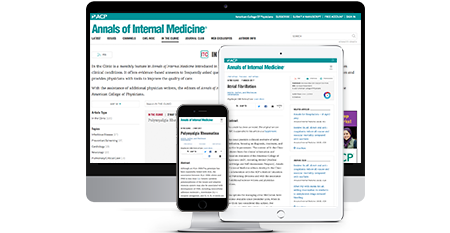Annals in the Clinic
Type 1 diabetes mellitus (T1DM) is an endocrine disorder in which pancreatic β cells stop producing insulin, typically due to autoimmune destruction. This results in hyperglycemia and ketosis; thus, insulin replacement is vital to management. Incidence peaks in puberty and early adulthood, but onset can occur at any age. However, prevalence is highest among adults because persons with T1DM live for many years. Symptoms include polyuria, polydipsia, and weight loss. Acute complications include diabetic ketoacidosis, which requires urgent management. Long-term complications include microvascular and macrovascular disease. Patients with T1DM are at higher risk for other autoimmune diseases and psychosocial issues. Management should focus on optimizing glucose control to reduce acute and long-term complications.
CME/MOC:
Up to 1.5
AMA PRA Category 1 Credits ™ and MOC Points
Expires March 08, 2025
expires-soon
Cost:
Free to Members
Format:
Journal Articles
Product:
Annals in the Clinic
Annals In the Clinic is a monthly feature in Annals of Internal Medicine introduced in January 2007 that focuses on practical management of patients with common clinical conditions. It offers evidence-based answers to frequently asked questions about screening, prevention, diagnosis, therapy, and patient education and provides physicians with tools to improve the quality of care.



